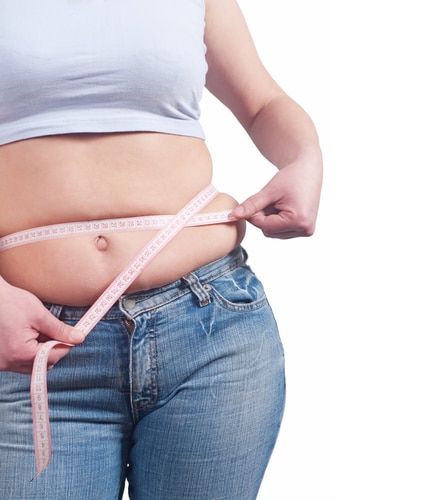Here’s a reason to embrace your curves. Oxford University recently did a research study on behinds and found that big butts are healthy butts!
The study revealed that women with bigger behinds have lower cholesterol, as well as an excess of heart-healthy omega 3 fats, which also help brain development. That means that people with bigger behinds are less likely to develop cardiovascular diseases and dementia.
While cultural norms may promote thinner bottoms for aesthetic reasons, from a health perspective, women with larger behinds tend to be smarter and healthier.
So let’s put these findings in context.
Curves Based on Body Composition
When it comes to body composition, a moderate amount of fat concentrated in the butt, hips and thighs won’t adversely affect health.
Women are born with a tendency to store fat in different areas of the body.
Pear shapes tend to store fat in the lower half of their body, the butt, and legs. Hourglass shapes tend to store fat in their breasts, butt and legs. And lastly, apple shapes store fat in their tummy. Of the three types, apple shapes are the ones who need to be concerned about their weight. Decreasing belly fat will make the most difference in protecting their health.
Research shows that people with apple-shaped bodies, that store fat in their middle, face more health risks than those with pear-shaped bodies, who carry more weight in their lower half. Belly fat is often associated with higher cholesterol and susceptibility to fatty liver disease and cirrhosis. Belly fat also affects blood sugar stability.
Fat that is stored around the tummy is more readily converted into energy when needed than fat around the hips and butt, and this raises cholesterol. Conversely, more fat around your bottom and less around your waist usually means lower cholesterol.
Belly fat is a marker of visceral fat, which is stored around organs such as the liver, pancreas and intestines. It has greater blood flow and more receptors to cortisol, a stress hormone produced by the adrenals. The fat stored in the hips and buttocks is peripheral fat, which does not affect the stress response like visceral fat does.
The greater the number of cortisol receptors, the more sensitive the visceral fat tissue is to cortisol. This heightened sensitivity to cortisol stimulates fat cells to further increase in size.
Hip to waist ratio (WHR)
This is a way doctors calculate obesity and the risk of conditions caused by obesity. Just like it sounds, WHR measures the ratio of the circumference of the hips to the waist. To get the WHR number, divide the waist measurement by the hip measurement. A higher WHR can indicate an increased risk of health issues. The lower the WHR signals better health.
Doctors use WHR as an indicator of health and probability of developing serious health conditions. WHR also correlates with fertility and is found to be a more efficient predictor of mortality in older people (over 75 years of age) than waist circumference or BMI.
How to Lose Belly Fat
One of the best ways to lose belly fat is to stop eating sugar and refined carbs. Doing a real food organic cleanse like the 21 Day Body Makeover is another great way to lose belly fat, stabilize blood sugar, balance cortisol production and improves liver function.
So flaunt that healthy butt and embrace your curves as you work towards losing the fat that really matters.


